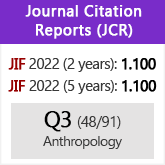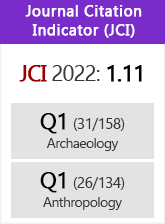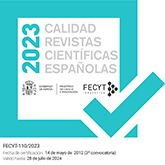An ethnoarchaeological study of a Ndorobo (Maasai) temporary camp site in Kulalu (Kenya)
DOI:
https://doi.org/10.3989/tp.1996.v53.i2.396Keywords:
Ethnoarchaeology, Spatial distribution, Meat, Marrow, Cut marks, Tooth marks, Skeletal representationAbstract
In this paper an ethnoarchaeological study is presented, focused on the refinement of the diagnosis of human behaviour on carcass processing and on the multiple ways of bone modification by post-ravaging carnivores. It is pretended to know the spatial distribution patterns of determined human activities (carcass processing, places of meat and marrow consumption), the biases introduced by the intervention of other nonhuman agencies, and the way that such overlapping processes can be recognised in the archaeological record. The aim is to analyse the material traces of all these factors and to improve the referential framework with which Paleolithic sites must be understood and accounted for.
Downloads
Download data is not yet available.
Downloads
Published
1996-12-30
How to Cite
Domínguez-Rodrigo, M., & Martí Lezana, R. (1996). An ethnoarchaeological study of a Ndorobo (Maasai) temporary camp site in Kulalu (Kenya). Trabajos De Prehistoria, 53(2), 131–143. https://doi.org/10.3989/tp.1996.v53.i2.396
Issue
Section
Reports
License
Copyright (c) 1996 Consejo Superior de Investigaciones Científicas (CSIC)

This work is licensed under a Creative Commons Attribution 4.0 International License.
© CSIC. Manuscripts published in both the printed and online versions of this Journal are the property of Consejo Superior de Investigaciones Científicas, and quoting this source is a requirement for any partial or full reproduction.All contents of this electronic edition, except where otherwise noted, are distributed under a “Creative Commons Attribution 4.0 International” (CC BY 4.0) License. You may read here the basic information and the legal text of the license. The indication of the CC BY 4.0 License must be expressly stated in this way when necessary.
Self-archiving in repositories, personal webpages or similar, of any version other than the published by the Editor, is not allowed.
















